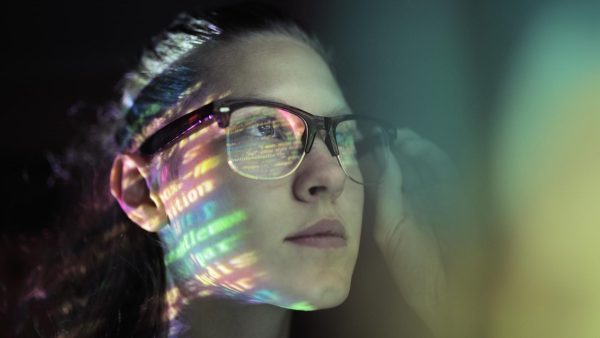Haptics: origin of the term
Haptics, as defined by the RAE, is the ‘study of perceptions through touch’, a word derived from the Greek haptikós, which in turn comes from háptein, meaning to touch.
With this definition and etymological origin, we can already get an idea of what the term refers to: the science that studies the sense of touch and the perception of sensations through it, encompassing on the one hand the perception of temperatures, pressures, shapes or textures and on the other hand the interaction with the environment through touch.
The relevance of haptics lies in its importance for human development, communication and interaction with the environment.
But what is the link between haptics and technology?
What is haptic technology?
Now that we know what haptics refers to, let’s look at what haptic technology specifically consists of.
This branch of technology could be defined as the set of techniques that use different types of electronic devices to simulate tactile sensations such as pressure, texture, vibrations or temperature.
Haptic technology detects the user’s movements and generates physical responses linked to them through haptic sensors (which capture movement, pressure or the position of fingers or hands), actuators (which convert electrical signals into vibrations or movements that the user feels) or controllers (which manage the interaction between the two previous elements to synchronise the tactile responses with the user’s actions).
Benefits of haptic technology
The use of haptic technology offers a number of advantages, such as the following:
- Greater immersion in virtual environments. The degree of realism is increased by the addition of tactile perceptions in immersive worlds, allowing users to feel textures, movements or forces. This is particularly useful in video games (something unthinkable when they were invented in the mid-20th century), simulators and virtual reality applications.
- Precision and control. In remote tasks where touch can make a difference by providing greater accuracy, haptic technology also represents a major advance, which may be of interest in fields such as medicine, industry, robotics and engineering.
- Accessibility. For people with visual impairments, this technology helps them interact with digital devices and environments by facilitating navigation or access to information, thereby improving their personal autonomy.
- User experience. By guiding the user through touch, experiences can be more intuitive and therefore more satisfying.
- Training. With the possibility of practising in safe and realistic environments, certain fields where haptic technology can be useful can also benefit in the learning and training of their professionals by offering realistic, risk-free practice opportunities.
- Personalisation. The fact that haptic technology allows both the type and intensity of sensations to be adjusted to suit the tastes and/or needs of users makes it comfortable and efficient.
With a wide range of benefits, as we have just listed, haptic technology is another step forward in the technological revolution we are experiencing and, in this specific case, it further blurs the line between the physical and digital worlds.
Haptic technology for immersive experiences
One of the practical applications of haptic technology is in the world of gaming, as mentioned above, where, thanks to the combination of multiple technologies, players can compete in high-definition virtual worlds.
Haptic technology makes this new concept of gaming experiences possible, such as Telefónica Edge Haptic Arena, where participants can “feel” thanks to a special vest that transmits sensations.
These sensations linked to touch, which are produced thanks to haptic technology, are combined with others (such as fibre for low latency, Virtual Reality, the generation of 3D environments or rendering or image creation in the cloud) that make it possible to enjoy an immersive experience with a high degree of realism.
Thus, we can summarise the role of haptic technology as one of the ways in which interaction with the digital world is advancing thanks to the ability to feel and manipulate virtual objects.








